When you’re in the mood for a refreshing and flavorful beverage, you might face an enticing dilemma – Chai Tea vs Thai Tea; which one to choose? Both these popular drinks offer a delightful taste, but key differences between them might make you wonder which one to opt for.
Chai Tea, with roots in India, is made from a blend of black tea, milk, and an enticing mix of aromatic spices such as cinnamon, cardamom, cloves, and ginger. It’s a warm, soothing beverage often associated with health benefits thanks to the antioxidant-rich spices. On the other hand, Thai Tea, hailing from Thailand, is a sweet and creamy concoction made from strongly brewed Ceylon tea (mainly), sugar, and condensed milk, giving it a unique orange hue and a deliciously indulgent flavor.
So, let’s learn more about these two wonderful beverages and find the perfect brew for your next tea adventure.
Please note: This article contains affiliate links, meaning I may earn a commission if you make a purchase by clicking a link. Of course, this comes at no extra cost to you and helps me keep offering readers solid information.
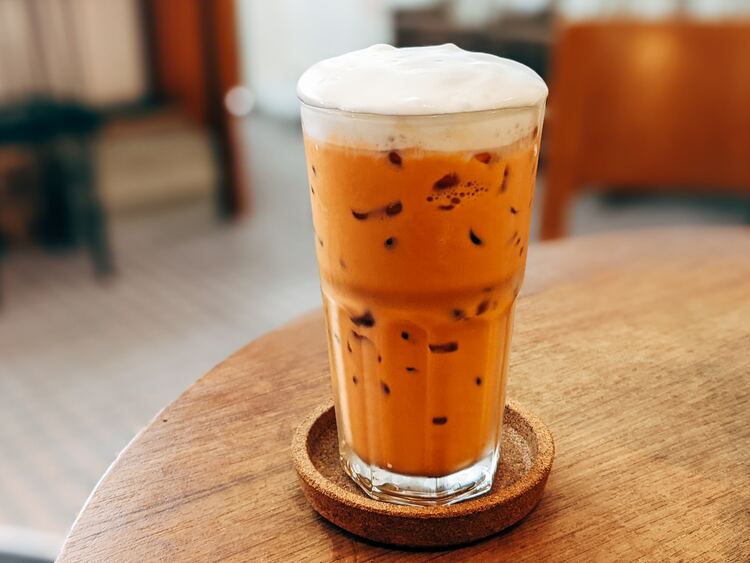
Origins and Cultural Background
History of Chai Tea
Chai Tea has its roots deep in Indian culture. As you explore its history, you’ll find that the origins are not completely clear but that it generally began in India thousands of years ago. Originally, the blend of spices and herbs was consumed for its Ayurvedic medicinal properties without any tea leaves. As trade routes expanded, China introduced tea into India, and the familiar blend of Chai Tea, as we know it today, was born.
In Indian culture, ‘Masala Chai’ – which translates to ‘spiced tea’ – is not just a drink but a way for people to connect. When you enter an Indian home, it’s not unusual for hosts to offer you a cup of Chai as a warm welcome. The mixture of spices in Chai Tea varies by region and family tradition, but commonly used ingredients include cardamom, cinnamon, ginger, cloves, and black pepper.
History of Thai Tea
Thai Tea, known locally as Cha Yen, originated in Thailand and has been a popular beverage for centuries. With influence from China and India, Thai Tea uniquely blends aspects of Asian culture to create its distinct flavor.
The foundational element of Thai Tea is strong black tea, often with crushed tamarind mixed in. As you delve deeper into its history, you’ll discover that its vibrant color originally came from adding food coloring. Today, some Thai Tea recipes may call for natural colorants like butterfly pea flowers.
Traditionally, Thai Tea is sweetened with sugar and condensed milk, which creates the signature creamy taste, and then poured over ice. It’s common to see Thai Tea enjoyed alongside street food or at local markets in Thailand.
Throughout both Indian and Thai cultures, tea tradition plays an important role, allowing people to come together and forming a unique aspect of their daily lives. Remember their rich histories and stories behind each cup next time you enjoy one of these two delicious beverages.
Key Ingredients and Flavors
Chai Tea Ingredients and Taste
Here are the essential ingredients commonly found in a Chai tea blend:
- Black tea
- Spices (cardamom, cinnamon, ginger, clove, and black pepper)
You’ll often find variations of Chai tea with additional spices, such as star anise, mint, or green tea. You can add milk, honey, or sugar to your tea to enhance the taste.
Each ingredient contributes to Chai tea’s unique and robust flavor profile. Cardamom lends a fragrant, spicy-sweet taste, while cinnamon imparts warmth and sweetness. Ginger gives it a spicy kick, and cloves provide a warm aroma. Black pepper adds a bit of heat and enhances the taste of the other spices. Combined, these flavors create a rich, creamy, and fragrant beverage.
Thai Tea Ingredients and Taste
Here’s a list of the ingredients typically used in Thai Tea:
- Black tea
- Sugar
- Spices (star anise and sometimes cloves)
- Orange food coloring (optional)
- Evaporated milk, condensed milk, or coconut milk
The tea is usually sweetened with sugar and topped off with creamy evaporated or condensed milk, giving it a rich and creamy taste. While Thai tea traditionally uses orange food coloring to achieve its distinct hue, it is unnecessary for flavor.
Star anise is the predominant spice in Thai tea, giving it a unique licorice-like flavor. Cloves, if used, add warmth and depth to the taste. The blend of spices, sugar, and milk creates a velvety and sweet experience, with just a hint of spice.
Now that you know the key differences in ingredients and flavors between Chai Tea and Thai Tea, you can choose the perfect cup to suit your personal taste preferences.
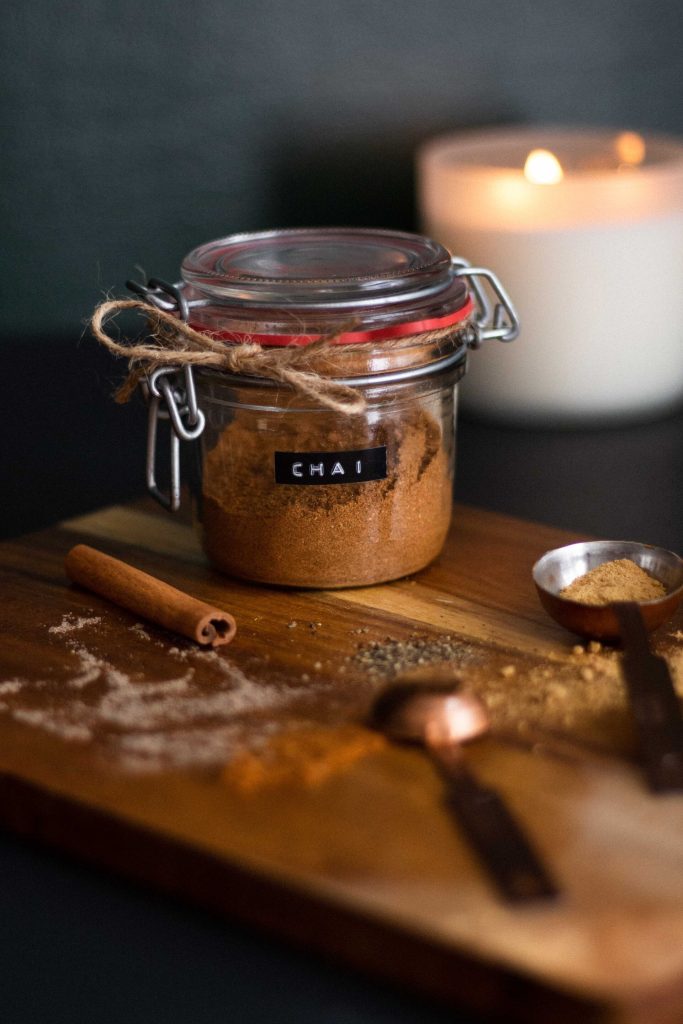
Brewing Methods and Serving Styles
Preparing Chai Tea
To prepare Chai tea, select a high-quality Chai tea blend. Due to its popularity, you will find plenty of options in the market. While you can buy chai tea blends, you can create your own blend with black tea leaves (Darjeeling or Assam work great) and spices such as cinnamon, cardamom, and cloves.
Here’s a simple recipe for preparing the tea from a bought blend.
Ingredients
- 1 chai tea bag or 1-2 teaspoons of loose-leaf chai tea mix
- 1 cup of water
- 1/2 cup of milk (dairy or non-dairy, optional)
- Sweetener of your choice (sugar, honey, maple syrup, etc.), to taste (optional)
Instructions
- In a small saucepan, bring 1 cup of water to a boil.
- Once the water reaches a rolling boil, remove it from the heat.
- Add the chai tea bag or loose-leaf chai tea mix to the hot water.
- Cover the saucepan and steep the chai tea for 5-7 minutes. This allows the flavors to infuse into the water.
- After steeping, remove the chai tea bag or strain the loose-leaf tea if you use loose leaves.
- Pour the steeped chai tea into a cup.
- If desired, add the milk to the chai tea and stir to combine. You can heat the milk so it does not cool the beverage.
- If desired, sweeten your chai tea with your choice of sweetener. Adjust the sweetness to your liking.
- Serve it hot and savor the delightful blend of spices and tea.
This basic recipe provides a quick and easy way to enjoy chai tea. Feel free to customize it by adding more or less milk and adjusting the sweetness to suit your taste preferences.
If you are interested in preparing Chai tea from scratch, you can find the recipe in our dedicated article.
Preparing Thai Tea
To prepare Thai tea, select a quality Thai tea mix, which usually contains a blend of Ceylon tea, spices, and food coloring. If you prefer a more natural option, you can make your own mix with loose black tea and spices like nutmeg and star anise.
First, steep the tea leaves in boiling water for about 5 minutes. While the tea is brewing, you can prepare your sweetener. Traditional Thai iced tea uses a syrup made of sugar and water, but you can opt for other sweeteners such as agave nectar or honey if you prefer.
Once the tea has finished steeping, strain it and mix in your sweetener according to your desired sweetness level. To create the classic iced tea appearance, pour the sweetened tea over ice and top with a layer of whole milk, evaporated milk (for extra richness), condensed milk (for extra sweetness), or a dairy substitute like coconut milk. Do not mix the milk, as the visual layers add appeal.
Find below a summary of the key differences between the two beverages:
| Chai Tea | Thai Tea |
| Assam or Darjeeling tea | Thai tea mix or Ceylon tea |
| Spices: cardamom, cloves, cinnamon | Spices: nutmeg, star anise |
| Can be served hot or cold | Commonly served cold |
| Sweetener: Optional | Sweetener: Syrup or alternative |
Remember, the key to a great tea experience is to experiment with your preferences in terms of sweetness, milk choice, and spices.
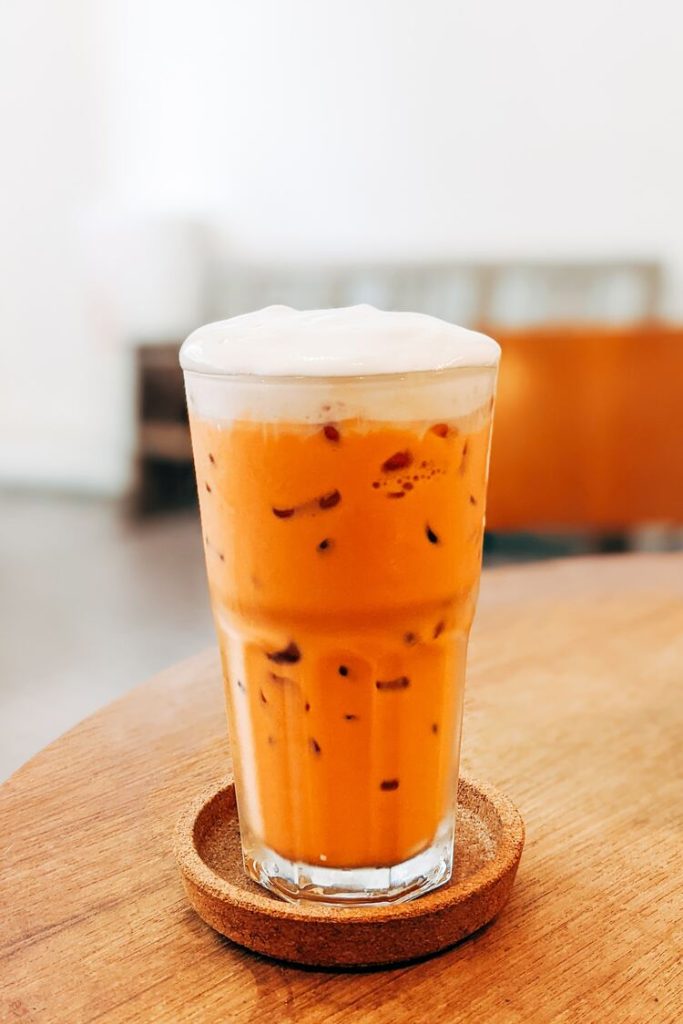
Popular Variations and Recipes
Chai Tea Variations
When it comes to chai tea, the possibilities are almost endless!
Chai lattes have become an especially popular variation of the traditional spiced black tea. To make a chai latte, combine your favorite chai blend with frothed milk. You can follow the recipe we shared above. Froth the milk with a whisk or electric frother, before adding it to the tea. For more information, take a look at our chai latte article.
Another popular variation involves adding fennel seeds to the mix. Fennel seeds give the chai a slightly sweet taste that many people find enjoyable. To create this variation, steep your chai with a teaspoon of fennel seeds.
Sweeteners can also play a big role in the flavor profile of your chai. Some people prefer honey or maple syrup, while others might go for a more traditional option like cane sugar. You can even use stevia or other sugar substitutes if you watch your sugar intake.
A classic snack to enjoy with chai tea is fried dough, which complements the bold flavors of the chai spices. Try pairing your chai with a homemade fried dough treat or opting for a store-bought version, like Indian-style puri or Chinese-style youtiao.
Thai Tea Variations
When it comes to Thai tea, there are several unique variations worth trying out.
One popular option is lime Thai tea, which adds a refreshing zest of lime to the traditional drink. To make lime Thai tea, squeeze a bit of lime juice into your prepared Thai tea and stir.
Another creative twist on Thai tea involves adding unique flavors to the mix. For example, some interesting options might include:
- Lavender
- Ginger
- Lemongrass
For those who prefer a dairy-free beverage, consider using soy milk as a substitute for traditional condensed milk. This not only makes the drink vegan-friendly but also offers a slightly different taste that you might enjoy.
Remember, the key to creating your perfect chai or Thai tea is experimenting with different ingredients and flavors until you find the combination that you enjoy the most.
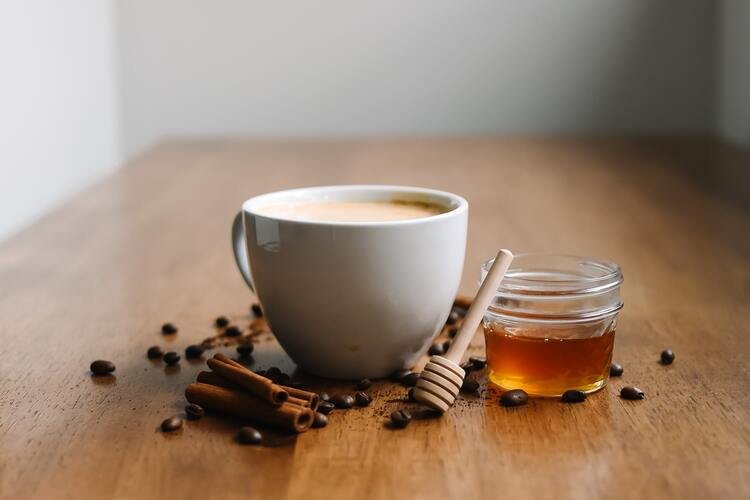
Chai Tea vs Thai Tea Health Benefits
The main ingredients in both beverages, black tea, and spices, may offer potential health benefits. Chai tea offers more benefits than Thai tea, especially when unsweetened or slightly sweetened. Thai tea’s health benefits are countered due to its high sugar content.
Chai tea’s health benefits include the following:
- Antioxidant Properties: Spices such as cinnamon and cloves that are rich in these.
- Digestive Health: The ginger and cardamom in chai tea may help to improve digestion.
- Lower Inflammation: The spices in chai tea may help to reduce inflammation in the body.
- Heart Health: Some studies have suggested that the cinnamon in Chai tea may help lower blood pressure and cholesterol levels, which are risk factors for heart disease.
Thai tea health benefits include the following:
- Antioxidant Properties: Black tea contains polyphenols, which may help protect the body from cell damage and inflammation. Spices such as star anise and clove contain antioxidants as well.
It is worth noting that the potential health benefits are largely based on the spices and ingredients used in the recipe. Some commercial blends may contain added sugars or artificial flavors, which can negate some of the potential health benefits. When buying ingredients to prepare your beverages, choosing a high-quality blend made with natural ingredients and little or no added sugar is best.
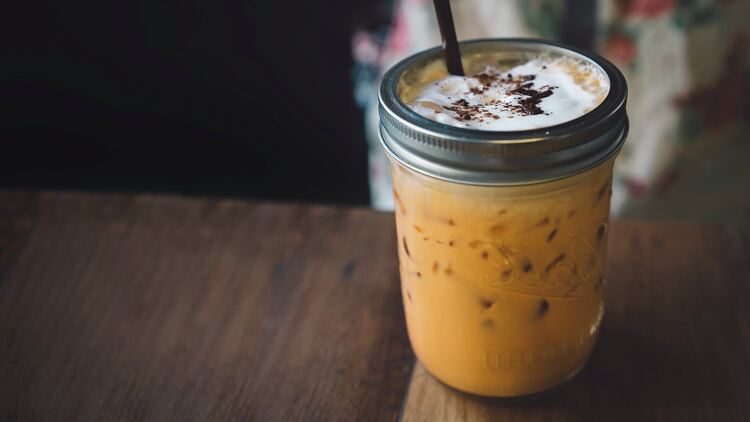
Caloric, Sugar, and Caffeine Content
When comparing Chai tea vs Thai tea, the caloric, sugar, and caffeine content of both is important. We are providing details about these aspects below:
- Calories: A standard serving of chai tea made with water and spices contains around 50 calories (milk and sweetener will increase the calorie count), while a typical serving of Thai tea made with black tea, sugar, and condensed or evaporated milk can contain around 150-200 calories or more.
- Sugar: Thai tea typically contains a higher amount of sugar compared to chai tea. While the amount of sugar can vary depending on the recipe, Thai tea recipes often call for a significant amount of sweetened condensed milk, which can add up to many calories and sugar (sugar content for an 8oz cup is between 20 to 25 grams). In contrast, Chai tea recipes may use natural sweeteners such as honey or maple syrup (but do not be fooled; you can end with the same sugar content of Thai tea if you are not careful).
- Caffeine: Both chai tea and Thai tea contain caffeine, but the amount can vary depending on the recipe and the type of tea used. Black tea, commonly used in both types of tea, contains around 47 milligrams of caffeine per cup.
We have provided some general guidelines. I recommend looking at the nutritional content of beverages when ordering at coffee/tea shops. You will have the ability to control the ingredients if you prepare the ingredients at home.
Chai Tea vs Thai Tea: Buying Recommendations
If you are looking to enjoy Chai tea or Thai tea at home, here are some of my favorite options:
Chai Tea
The Republic of Tea Chai Black Tea


Blue Lotus Chai, Traditional Masala Chai

Oregon Chai Slightly Sweet Chai Tea Latte Concentrate

Rishi Tea Masala Chai Concentrate Beverage

Thai Tea

Thai Iced Tea Mix, Traditional Restaurant Style

Number-One ChaTraMue Original Thai Iced Tea Mix

Hope you have enjoyed the article! Chai tea vs Thai tea. What is your favorite?
More About Chai Tea
What Does Chai Tea Taste Like?
What Does Chai Latte Taste Like?
More About Black Tea
The Process of Making Black Tea
What Does Assam Tea Taste Like?
What Does Darjeeling Tea Taste Like?
What Does Ceylon Tea Taste Like?